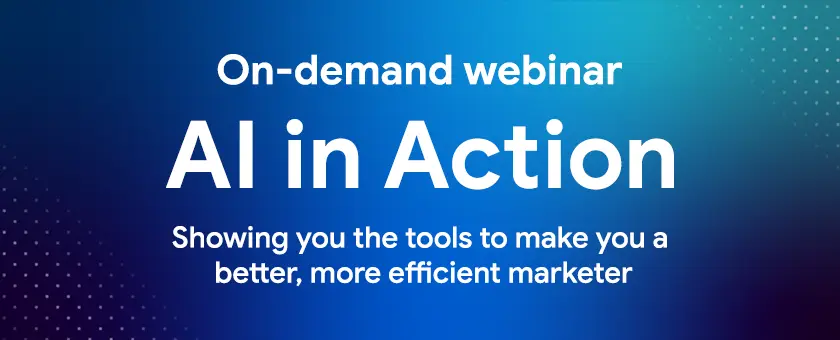It was 2006 when mathematician Clive Humby first stated “Data is the new oil” and that certainly seems to be the case, with companies widely stating that data is one of their most valuable assets.
But how can you easily turn data into a refined marketing strategy?
Instead of manually managing piles of data, artificial intelligence (AI) powered tools can automate the whole process for you.
Going back to a company’s most valuable assets, “the people” used to be the de-facto response. So, is data (and the AI tools used to analyse it), taking away the need for human intervention?
Thankfully (especially for my employees!), the answer is no. Data is incredible, but only when you know how to extract value from it. Having a database is just the first step in a very, very long journey.
The next one is making strategic decisions based on its insight, which isn’t easy, and can only be done by combining great technology with human logic.
This was the topic of an, at times heated, debate I had with Andrew Furlong, MD of REO. While I was a big fan of the use of tech, he is a big fan of human insight.
You can see the full fight debate in the below webinar (it’s only 20 minutes long so worth a watch over lunch).
Watch Man vs Machine
AI beyond buzzwords
Before we continue, let’s establish what we mean by AI. I’m not talking about a The Matrix kind of artificial intelligence, or about a sassy virtual assistant like Iron Man’s J.A.R.V.I.S. – that’s still science fiction.
The AI we are dealing with is software, which is based on machine learning – a series of algorithms and statistical models that allow computers to learn and perform a task by recognising patterns.
The model is trained on a data sample, and can be programmed to perform specialised functions – marketing automation for the purpose of this blog post (it’s what we do after all).
Machine learning’s strength comes exactly from its ability to specialise in and master a limited number of tasks.
Automation. Automation everywhere.
Okay, it’s time to talk about how machine learning can help you in practice, and how to combine it with human insights. Ready?
First of all, an automated marketing software can analyse the behaviours of your customers, identifying patterns you couldn’t see before. You may find, for example, that users from a particular channel are more likely to make a purchase.
Now you need to ask yourself what are you doing on that channel that makes the difference? Can you replicate it on the others?
That’s where you and your team come in, creating a great strategy based on the software analysis.
Once your creative team has devised the campaign, the software can learn how to automatically put it in place based on triggers.
Let’s take another example; say you discover during A/B testing that an email prompt correlates with customers going back to an abandoned basket. You can instruct your software to send that email every time a basket is abandoned, saving you time and resources.
You can also use the software to personalise the email with other products the customer has looked at, giving them new shopping ideas based on their preferences.
A fashion retailer, for example, could suggest combinations of clothes and accessories to add to those the client has purchased.
Men and machines working together
AI is great. It helps to make sense of piles of numbers and turn them into the basis for a successful marketing strategy.
Yet, every piece of tech is an enabler, not a solution. It’s worth nothing without a spark of human insight, especially when it comes to marketing personalisation.
What works for you? Man or Machine?
If you’re interested in hearing more on this debate…
Watch Now




